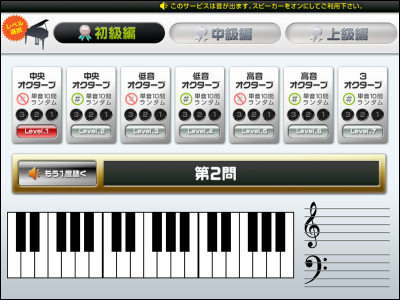"Ear Training" site that allows advanced ear training from free listening to solfege
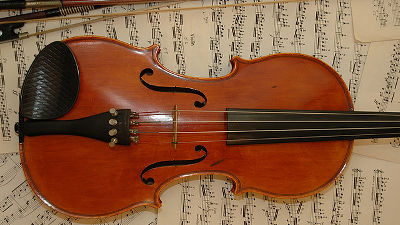
ByPhoto Phiend
For those who want music, the ability to accurately distinguish between differences in sound is indispensable. In addition to "absolute pitching" which is said to be born as being born, it is said that it is important to train "relative psychoacoustics" acquired afterwards acquired afterwards, but for those who are not quite ready for the environment It is difficult to actually do the training. A site that provides such a training environment is "Ear TrainingHowever, this site starts with listening to basic sounds, discrimination of chord progression, and surprising contents that you can do advanced ear tray such as solfegghe even on smartphones.
Ear Training
http://tonedear.com/

On Ear Training's site, you can select "Intervals", "Chords", "Scales", "Chord Progressions", "Perfect Pitch", "Scale Degrees (Sound level), Intervals in Context (interval in context), and "Melodic Dictation (melody writing)".

Intervals(Interval), we will do training to distinguish the distance (pitch) between the two sounds to be played. When you open the page, you will see a screen for setting Intervals (pitch) and Questions (number of problems). If you want to train indefinitely, you can set Questions (repeat count) to "0".

Intervals allows you to select three training content. If you choose "Simple", only 3 degrees, 5 degrees perfect, 3 octaves will be played, so if you get used to it, difficulty level can be aimed quickly. Diatonic (Diatonic) is only given a so-called "sound of white key" not sharp or flat. Choosing "All" makes it difficult to apply sounds from 14 notes + short 9 degrees and 14 sounds long up to 9 degrees.
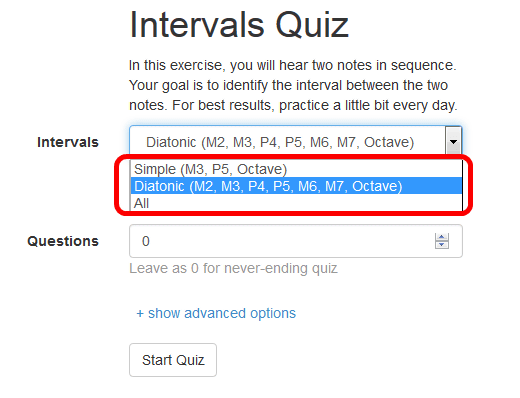
First from basic, set Intervals to "Simple", set Question to "0" and click "Start Quiz".

The question screen is like this. Click "Hear First Question" in the center of the screen to start the question. The pitch from "Minor 2nd (short 2 degrees)" to "Major 9th (long 9 degrees)" is displayed on the right side of the screen, and only the pitches to be quoted by the question are displayed in blue. It is also possible to add and delete the sound to be played by directly clicking this sound.
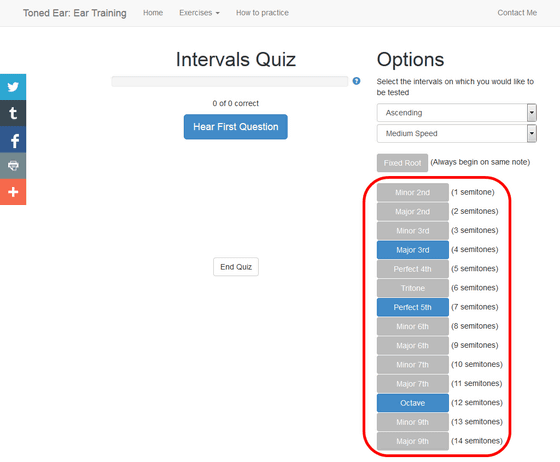
So, click "Hear First Question" and start.
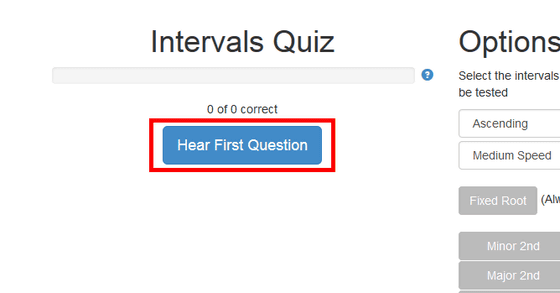
Then, "♪ ~ ♪ ~" and two sounds were played. I listen to the second sound how many times it will sound for the first note and choose from the lower "Major 3rd" "Perfect 5th" "Octave", but this time "♪ Since it was played as "Do - Mi ~", try clicking "Major 3rd (long 3 degree)".
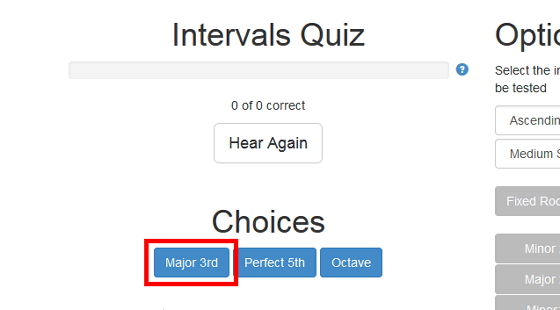
Then, "Nice!" Major 3rd "is correct!" (OK! "Long 3rd" correct answer!) Is displayed in green and the slide bar at the top of the screen got a little longer. Then click "Hear Next" at the top of the screen, and I will gradually repeat the training.
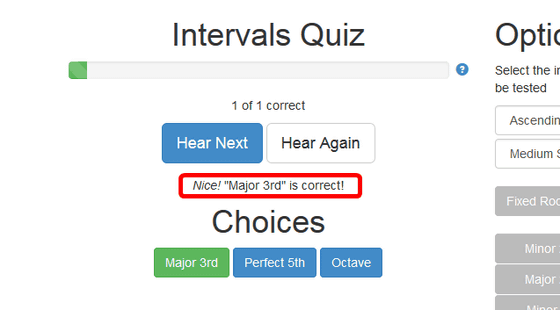
By the way, when choosing the wrong sound, it is displayed as "Nope," Perfect 5th is not correct. "(Hazure: not" completely 5 degrees ") and so on, the slide bar has also decreased.
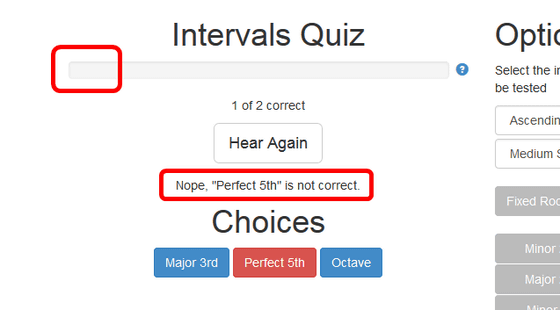
Continue training like this and finally click "End Quiz" ......
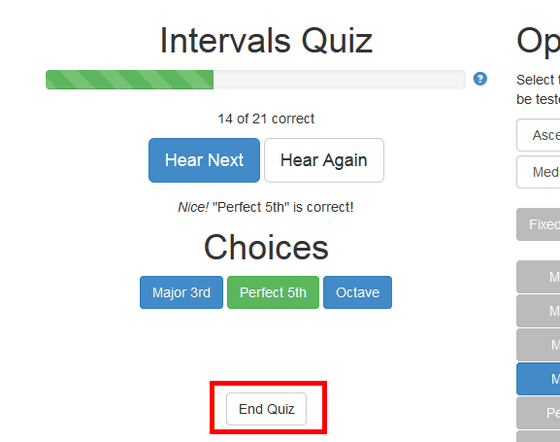
The correct answer rate of this session was displayed for each interval. By seeing this, you can see at a glance which pitch you can not understand well.
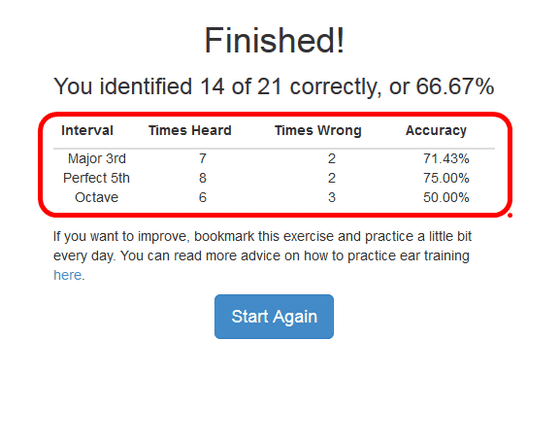
Like this, "Ear Training" allows you to do listening training such as chords and musical scales.Chord Identification(Chord / code listening), training that honors chord names by listening to all kinds of chords such as August / Diminish, Sus 4, Dominant · Seventh, Major · Seventh, etc., as well as simple long chords and short chords is possible. In addition, it is possible to turn around the way of stacking chords (moving the root sound), so it is possible to follow quite professional training.
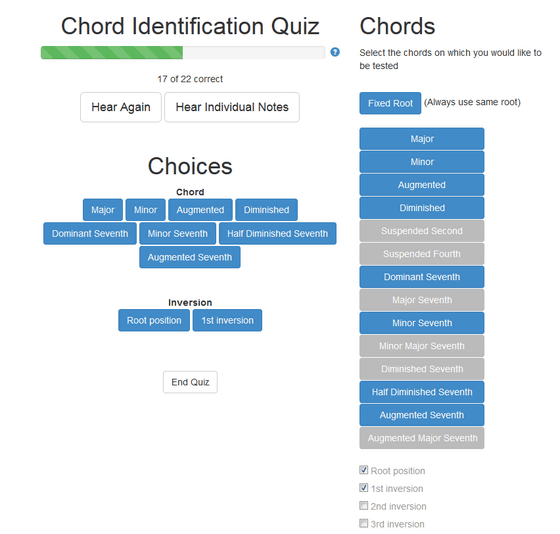
Scale Identification(Scale and scale listening), it is possible to listen to the main scales such as simple major scale (Ionian) and short scale (Eolian), harmonic · minor, durian, Frijian, lidian, mixolidian, locarian. As well as the difference in scale, tones (keys) change as you play, so it is possible to train different pure musical differences.

Chord Progressions(Chord progression), four chords (chords) are played, so that chord progression is chosen. Started from the so-called "major triad (three code)" of simple "I, IV, V" consisting of "trio" of "Do · M · S ·" and the other "ii, iii, vi, vii ", And you can do training training of four chords that adds 7th note to the triad.
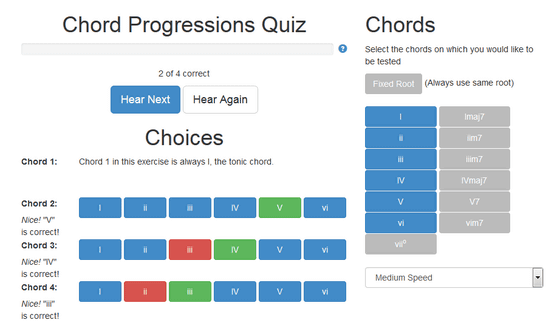
Perfect Pitch(Absolute pitch) training to hear one sound and which pitch of sound it is. From the beginning of "De Le Mi" alone, it is possible to try up to the advanced version where all 12 notes including semitones appear.
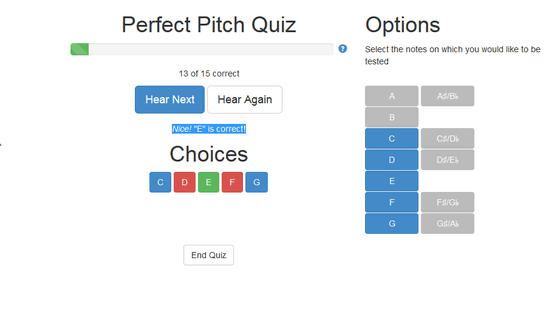
And from here we will enter the function training of the ear that leads to the so-called "solfege".Scale Degree(Sound) is a test to distinguish how many notes a particular tone (key) hits. First of all, three chords are played, so you firstly decide the key, then decide which sound in the key is the next one to be played back as "do de l 're mi · f · f · · · · Choose from among the names of Shi La Ri Ti. So-called"Move"It is quite difficult to get used to, as it is hard to get used to, it is faster to understand if you fix the key with" Fixed Key "on the right side of the screen and grasp the trick.
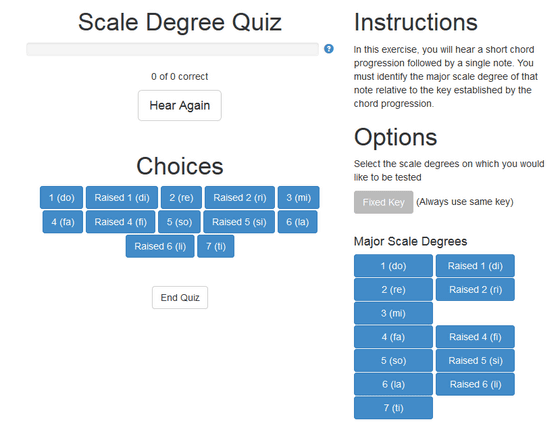
Intervals in Context(Interval in the context), we further delve into "sound degree" training. The first three chords are played in the same way, but after that two phonetic notes follow. First of all, it is a test that you do not know what you are saying by just finding out the names of the two monophones and then choosing the relationship between the two sounds from the short two degrees from the octave.
In short, Intervals in Context analyzes the pitch names of two monophones and how they are separated from each other, but assumes that it is necessary to tell the name of the floor in the given key It is highly advanced training. In the following example, we can see that the second sound "Mi" is the "Do" above Mi, and the pitch centered on "Mi" is "Minor 6th" It is content to see that it is that it is.
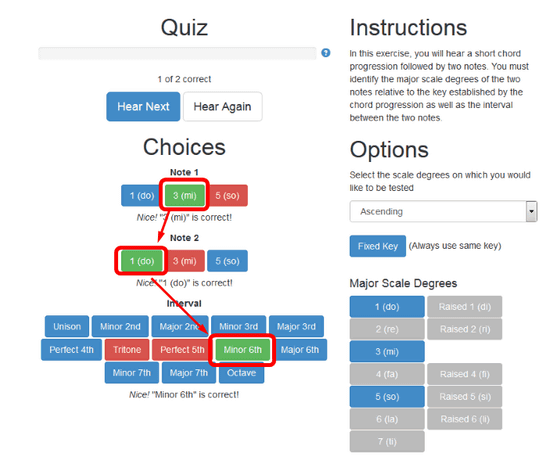
And lastMelodic Dictation(Melody writing), this is a test to describe the four monophones reproduced after the three chords similarly on the score in Solfegge. People who can easily clear up to this point have contents that can be said to be owner of considerable ears and sounds.
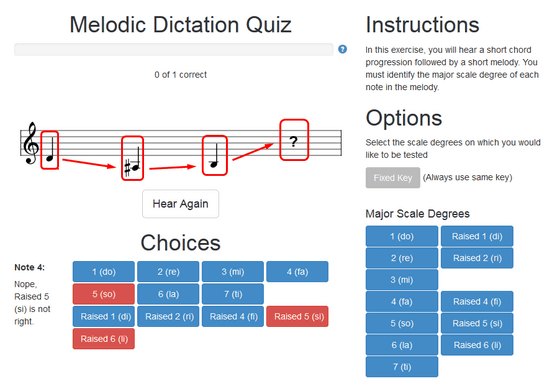
Although it includes training that seems to be difficult if you are not familiar with it, the site is preaching the importance of "to keep on pushing hard from everything a little bit every day". According to the explanation of the following page, training of sound creates "synapse" which is a connection of new neurons in the brain, which gradually increases the brain power that distinguishes the sound gradually increases . As this synapse decreases with time, repetitive iterative practice becomes important. Therefore, it is said that the effect of training will appear more "to continue training every day for 20 minutes a day" rather than "to conduct intensive training once a week for 4 hours".
How to practice ear training
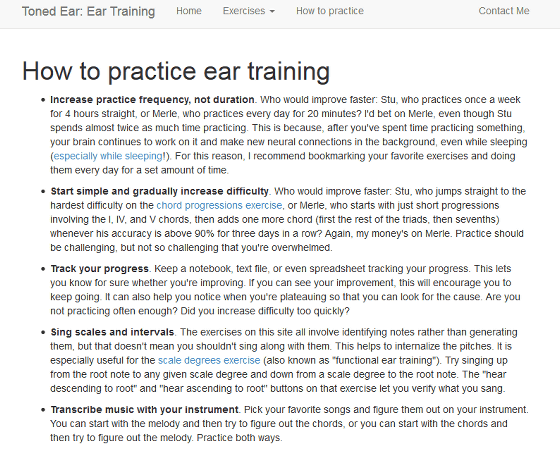
In fact, I went through all the training for about 2 hours to create an article, and I realized that the listening skill of the ear was improved compared to the beginning. In order to practice this hand by myself, it became obstacles such as necessity of instruments, but if you bookmark this site, you can easily do training with smartphone, so the power of your ears It seems to be said that it is a very useful site for those who want to train.
Related Posts:
in Web Service, Art, Posted by darkhorse_log
